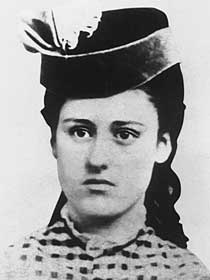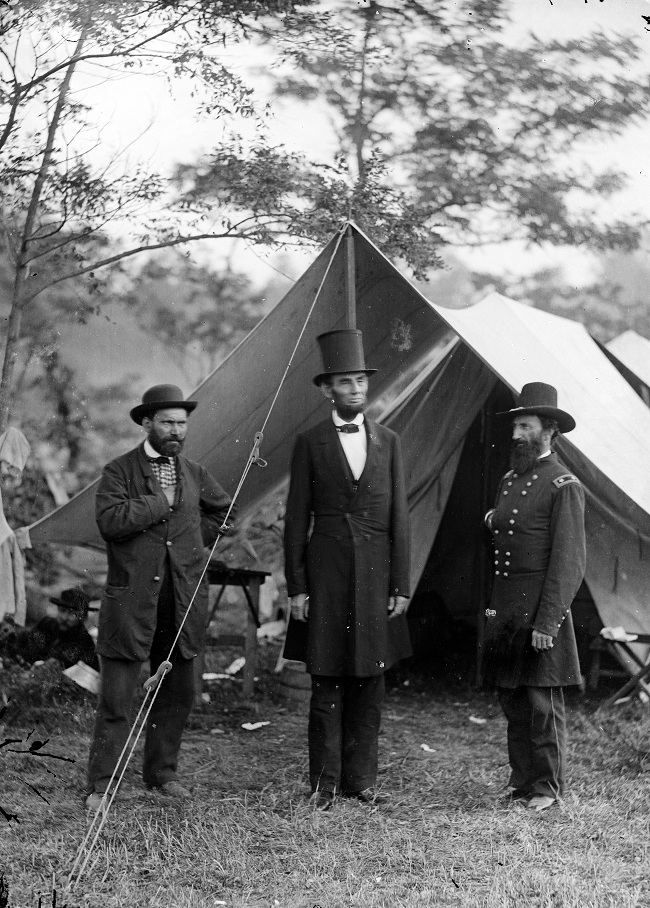By Daniel Stashower
My son’s history teacher thinks I’m spreading lies.
To be fair, he was wonderfully polite about it. “I read your book,” he told me, standing by the punch bowl at Back to School night. “That story about Lincoln’s beard . . . isn’t that apocryphal?”
Apocryphal. The mannerly way of saying: “you’re full of it.”
Here’s the story in a nutshell. In Springfield, Illinois, towards the end of 1860, Abraham Lincoln decided to grow a beard. He had just been elected president, and the change of appearance was intended to mold a new image as he entered the White House, putting the seal on his transformation from prairie rail-splitter to judicious statesman. A popular piece of lore tells of a letter Lincoln received from eleven-year-old Grace Bedell, a girl in upstate New York, who advised him during the campaign that growing out his whiskers would likely tip her family’s support in his direction: “[Y]ou would look a great deal better for your face is so thin,” Miss Bedell reasoned. “All the ladies like whiskers and they would tease their husbands to vote for you and then you would be President.”

Abraham Lincoln without a beard, May 20, 1860. Photo is in the public domain, via Wikimedia Commons.
The letter drew a prompt reply from Lincoln, who expressed regret that he had no daughters of his own to advise him on such matters. “As to the whiskers,” he said, “having never worn any, do you not think people would call it a piece of silly affect[ta]tion if I were to begin now?” In fact, Lincoln had been pondering the change for months. “It is allowed to be ugly in this world,” he remarked, “but not as ugly as I am.” The beard, he believed, would serve to “hide my horrible lantern jaws.”

Grace Bedell, 1870s. Photo is in the public domain.
I felt wholly justified in including this anecdote in The Hour of Peril: The Secret Plot to Murder Lincoln Before the Civil War. Though my book deals with the efforts of detective Allan Pinkerton to thwart a looming assassination plot against Lincoln in Baltimore, it also details the many twists and turns of the president-elect’s fateful train journey to Washington for his inauguration— a journey which, in its latter stages, took a northerly swing through the remote village of Westfield, New York, which happened to be the home of young Grace Bedell.

Allan Pinkerton; President Abraham Lincoln, sporting a beard; and Major General John A. McClernand at Antietam, October 3, 1862. Photo is in the public domain, via Wikimedia Commons.
“Some three months ago, I received a letter from a young lady here,” Lincoln told a crowd of Westfield residents from the rear platform of his train. “It was a very pretty letter, and she advised me to let my whiskers grow, as it would improve my personal appearance. Acting partly upon her suggestion, I have done so; and now, if she is here, I would like to see her.” Lincoln was immediately pointed in the direction of a girl who stood “blushing all over her fair face.” He climbed down from the platform and bent low to give her “several hearty kisses,” amid cheers from the crowd. “You see,” he told her, “I let these whiskers grow for you, Grace.”
Many history texts have dismissed the Grace Bedell incident as a colorful piece of fiction, but it’s not. The letters between eleven-year-old Grace and President-elect Lincoln are preserved in the Library of Congress for all to see. And today, in Westfield, there are statues of Lincoln and young Grace to depict their celebrated meeting.
As I told my son’s history teacher, you just can’t make this stuff up. “The fact is,” as Lincoln himself once remarked, “truth is your truest friend.”
DANIEL STASHOWER is an acclaimed biographer and narrative historian and winner of the Edgar, Agatha, and Anthony awards, and the Raymond Chandler Fulbright Fellowship in Detective Fiction. His work has appeared in The New York Times, The Washington Post, Smithsonian Magazine, AARP: The Magazine, and National Geographic Traveler as well as other publications. His latest book is The Hour of Peril: The Secret Plot to Murder Lincoln Before the Civil War.
